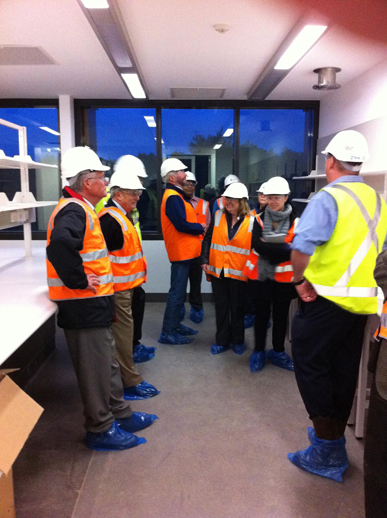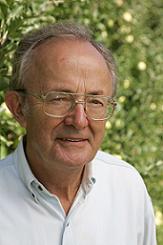simon says...
.jpg)
Déjà vu, as the Chairman has identified is well and truly alive in the office. If the current level of joviality in the office is any measure then we are either very happy with the progress of the bid or the completion of a second bid in two years has finally got to us all.
The reality is that the 2011 rebid was submitted on Thursday 30 June. The core group believe we have compiled a bid that is much stronger than last year and we have been able to address the feedback received after the disappointment in 2010. The planning has been like clockwork and much of the stress that was generated in 2010 as we compiled information has not occurred. Based on the effort that has been put into completing this rebid, hopefully we can quote baseball legend Babe Ruth (I am sure he would approve of the small edit):
"It's hard to beat a person team who never gives up."
The process of submitting a rebid involves several components. The largest, and most complex to complete, component is the Impact Tool. This develops the business case for the CRC on which the selection criteria are addressed in a maximum of 10 pages. The criteria cover research, results and resources. To cover the criteria a 500 word executive summary is written. This summary must ‘sell’ the bid. The final component is the uploading of all budgetary information to the on-line system.
The rebid has achieved a higher level of commitment (about 10%) than we achieved in 2010. The cash commitment has reached $5.28 million per year with in-kind sitting at close to $10 million per year. We will seek a six year term from the CRC Program with $5.28 million sought from the Commonwealth for each year of operation.
A significant strengthening of the rebid was achieved with the commitment from DAFF to participate. This support, plus the recent endorsement of the Intergovernmental Agreement on Biosecurity and the National Plant Biosecurity Strategy, highlight the importance of succeeding with this bid.
We have also worked with several of our participants to raise the profile of the CRC. I thank those representatives from various participants who have assisted us in achieving this task.
My analysis is that we have submitted a strong rebid and that, based purely on merit and support, we should have a very high probability of achieving success. Any other factors that may influence the final decision are outside of our control.
.jpg)
The moment the rebid was successfully submitted!
I do not have any PhD submissions to report on but I am aware of at least two who are in the final stages of completing submission. By the time the next Leaflet comes around we will have at least two more to congratulate.
In other CRCNPB business, the Board recently met in Camden, where we participated in a field trip to the new Elizabeth Macarthur Research Institute (see image below for your chance to win a prize).
The final Science Exchange for CRCNPB, and hopefully the first of the PBCRC, has been booked. It will take place in Perth from 21-25 May 2012. I encourage you all to lock this date in your diaries as I am sure it will be a great event that builds on the success of all previous Science Exchanges.

Dr Simon McKirdy
Chief Executive Officer

The Board during a recent field trip to the Elizabeth Macarthur Research Institute.
For your chance to be in the running to win a CRCNPB prize pack, send a creative caption for this image to Andrew Crichton by 31 July 2011. |
in this issue...

From the arm of the chair
Ever wondered what goes on inside the CEO's brain? Professor John Lovett takes a look at the effects of a second rebid. Read more.
CRCNPB wins CRCA award
The CRCNPB has been recognised for the groundbreaking research it has been undertaking, winning an Award for Excellence in Innovation. Find out more here.
Phosphine still a killer in cooled grain
From 25-27 July, the CRCNPB will be supporting the grains industry through an exhibition booth at its annual conference in Melbourne. Learn more about one of the CRCNPB’s important grains projects – how phosphine is a killer in cooled grain – here.
PhD completed by Paul Royce
It was reported in the last edition of The Leaflet that PhD candidate Paul Royce had submitted his thesis. Find out what Paul’s research focused on.
Biosecure packaging brochure
Do you need to send a sample for diagnosis? Read the recently released packaging brochure to ensure samples are packaged correctly.
other news...
Escaping to the Kimberley is Board member Chris Richardson's favourite holiday destination. Find out what else he enjoys doing in his spare time.
In this edition’s education and training update, Program Leader Dr Kirsty Bayliss congratulates students who have had their research published in international journals. Read who has been published here.
The CRCNPB recently provided sponsorship at conferences in Brisbane and the Sunshine Coast. Find out more here.
Want to know more about Cooperative Research Centres in general? Sign up to the CRC Association newsletter here. |


.jpg)




.jpg)

.jpg)

